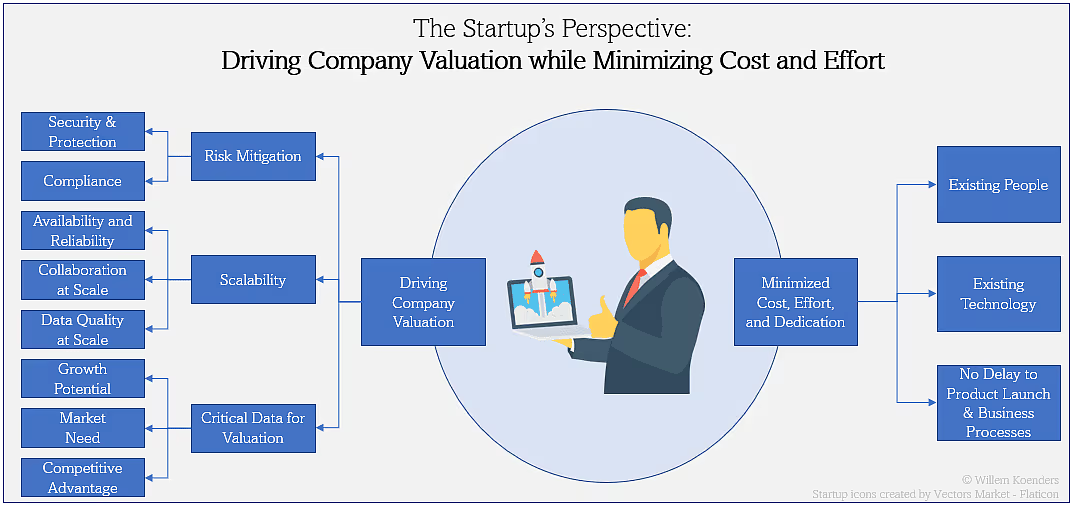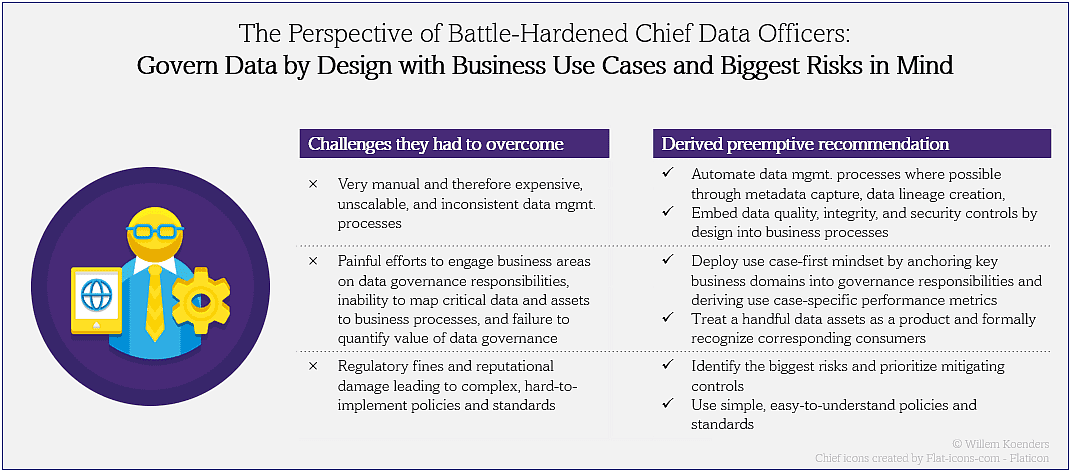Opinion & Analysis
2 Essential Strategies for CDOs to Balance Visible and Invisible Data Work Under Pressure
Don’t ignore the whole data story!
Written by: Boyan Angelov
Updated 5:31 PM UTC, July 16, 2024

HENRIQUE CASINHAS
The board of a fictional mid-sized organization decides it’s time to double down on advanced analytics and AI and commits to bringing in an ambitious leader: Anne. Even before she started as CDO, during the interview process, Anne was made aware of the organization’s current outstanding technical issues: siloed datasets, broken pipelines, and legacy code.
This state of affairs does not scare her because she has dealt with similar situations. However, she does not expect what will come next: a smaller, nimbler competitor enters the space, and at the same time, her budget is slashed in half due to unforeseen global market performance affecting company operations.
This pressure forms the backdrop of Anne’s first 100 days. The board sets two targets for her:
-
Steady the ship and set it up for long-term success. To achieve the first goal, she must instill confidence in her team with quick wins: visible products clients and management can get excited about.
-
The second goal requires her attention to topics her superiors often ignore, such as data quality and governance. Based on previous experience, she knows that even the best pilot products will eventually fail without a solid foundation, hampering the organization’s ability to compete.
Anne’s story might appear overly dramatic, but many CDOs have experienced this tricky balancing act (DalleMulle and Davenport recognized the dichotomy of strategies). Short-termism under pressure is a common mistake, resulting in an unbalanced strategy. How can we, as data leaders, successfully navigate such a scenario?
“Working under pressure and with limited trust from senior management can force first-time CDOs to commit to an unbalanced strategy, focusing on short-term, highly visible projects – and ignore the essential foundation.”
Anne knew she was not the first leader to face such a situation, so she looked at what others had done. For example, David Castro-Gavino, VP of Data at HelloFresh, started by identifying concrete enablers for his organization. Data quality, governance, platform, and culture were already a part of their data strategy, but he needed to dig deeper to discover concrete work packages.
At the time, HelloFresh’s customer base expanded rapidly – the COVID-19 pandemic forced more people to order food from home. This exponential growth brought a considerable challenge in the time taken to access actionable insights. Moreover, the company’s public status provided an additional regulatory incentive to invest in data quality and granularity.
A second major work package he committed to was also focused on the longer term. He realized that to enable new advanced analytics products at the next stage of the data strategy, he needed to increase the number of purple people (those who possess a mix of business and technology skills) in the organization. For this, he spearheaded a data culture work package called “HelloData YOUniversity” — an upskilling program for business users.
1. Key data enablers
Anne decided to follow a similar approach. She knew that a crucial part of her longer-term data strategy was improving the capability of self-service analytics. She started by talking to one of the data team’s main clients — the sales team, who she heard had issues with quality in their reports. They told her the reports take a long time to generate, and the data is often corrupted and missing.
A second red flag for her was that they referred her to IT to track the root cause of the issues. On top of this, she received a note from the legal team mentioning that she needs to provide a report on how those reports handle sensitive information regarding GDPR. Unfortunately, she couldn’t find any documentation and didn’t even know who to ask for more information.
This led her to create the list of work packages based on David’s enabling pillars (People, Governance, Technology and Enablement):

Now, Anne has discovered the work packages that need to be completed to have a balanced strategy. However, the second step is still in front of her — understanding the motivation of the senior management. Why were those topics neglected before her tenure and how can she motivate them to see the whole data picture?
2. Forces and incentives
Francisco Sanchez, Director of Product, Data Platform at Delivery Hero, successfully argued for work packages related to establishing a common governance framework to define, measure, and steer the quality of core data across his multi-brand organization, breaking data silos and enabling cross-brand collaboration and consolidation of data-intensive services.
Thus, he convinced senior management that this enabling topic should be a part of their data strategy. Roy Ben David, Group Director of Data and Analytics at Solaris Bank, and Oliver Doerler, Divisional Board Member and Chief Data Officer at Commerzbank, used existing operational disruption due to slow data processing as a motivating factor.
Anne compiled these and other industry leader lessons in a Force Field Analysis (FFA) diagram:

The desire to invest in enabling topics stems from the balance between driving and constraining forces. The senior management tends to ignore enabling topics because they rarely directly contribute to the bottom line; they can be a black box to a non-technical person (what is a data lakehouse again?) and require multiple teams to collaborate effectively. On the other hand, Anne knew that the same people eagerly anticipated the impact of advanced analytics such as GenAI and were worried about potential regulatory risks.
With the knowledge of the key enabling work packages and the motivating forces at play, Anne has everything she needs to argue for and execute a balanced long-term data strategy that does not ignore the “invisible” work required. Telling the whole data story sets her and the organization up for long-term success.
About the Author:
Boyan Angelov is a data strategist who has spent most of his career as a management consultant and CTO, working on designing and delivering data strategies for large multinational organizations. He is a regular speaker at conferences and podcasts, for example, DataCamp and LeadDev, and has published research on explainable AI. He is the author of two books: O’Reilly’s Python and R for the Modern Data Scientist: The Best of Both Worlds and Elements of Data Strategy: A Framework for Data and AI-Driven Transformation. He writes regularly for online and offline publications, such as Handelsblatt and AI Mag.


